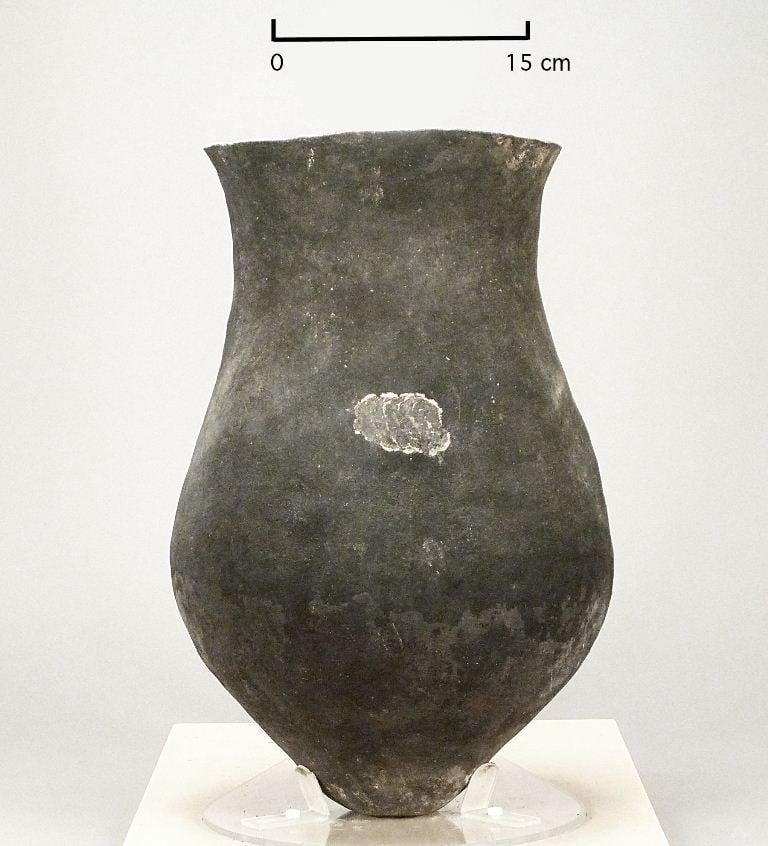Dinetah Gray Pottery: Uncovering the Origins, Characteristics, and Cultural Significance of Early Navajo Ceramic Artifacts

Early Navajo sites feature utility ware pottery known as Dinetah Scored, as coined by Malcolm F. Farmer, and Dinetah Utility, as named by Alfred E. Dittert. Dinetah Gray is the earliest utility ware clearly attributed to Navajo potters and is the most prevalent ceramic type found at sites in the traditional Navajo homeland, commonly called the Dinetah.
Past descriptions and discussions of Dinetah Gray often assumed a relatively late arrival of Navajo pottery in the Dinetah region, sometime after the Pueblo Revolt or during the late seventeenth to early eighteenth century. However, more recent investigations suggest that Dinetah Gray is associated with components dating back to the entire seventeenth century and can be found as early as the mid-sixteenth century. It remains unclear whether Navajo pottery represents a technology adopted from Pueblo neighbors after their entry into the Southwest or was acquired earlier during their migration from the Arctic through the plains or mountain-west.
Dinetah Gray is prevalent in assemblages dating to the Dinetah and Gobernador phases of the Navajo. Vessels were constructed by coiling and finished by scraping, with coil junctures rarely visible on either the interior or exterior. Unlike Anasazi pottery types, Navajo scraping focused on coil juncture obliteration and possible surface texturing. Most vessel surfaces are rough, bumpy, and pitted, and almost always unpolished. Distinct striations or scoring on exterior surfaces are common and may be the result of using juniper bark or corn cobs or husks as scraping tools. Dinetah Gray vessels are typically thinner than Anasazi gray ware types, and decorations are extremely rare.
Vessel forms are mostly cooking or storage jars, with a few bowl sherds present. Jars are narrower, and bases are more conical than in Anasazi tradition jars. Most vessels have conical bases or pointed bottoms with thin, flat bases. Vessel size is highly variable, with later period forms often being narrow, tall, and large. The overall shape and profile differ significantly from Pueblo traditions but most closely resemble those produced in the Gallina region, which also display pointed bottoms. Dark or black surfaces are common, resulting from both firing and cooking. Organic adhesions on some sherds and vessels are likely residue from pitch applications.
Bibliography
- Hartman, R. P., Musial, J., & Trimble, S. (1987). Navajo Pottery: Traditions and Innovations. Northland Press.
This book provides an in-depth look at Navajo pottery, including Navajo Gray Ware. It includes detailed descriptions of the techniques and materials used to create Navajo Gray Ware, as well as a history of the art form. - Batkin, Jonathan. (1987). The Pottery of the Pueblos of New Mexico, 1700-1940. University of New Mexico Press.
While this book focuses primarily on Pueblo pottery, it includes a section on Navajo pottery, including Navajo Gray Ware. It provides an overview of Navajo pottery traditions and includes photos of Navajo Gray Ware pieces. - Blair, M. E., & Blair, L. (1999). The Legacy of a Master Potter: Nampeyo and Her Descendants. Northland Publishing.
This book focuses specifically on the pottery of the Nampeyo family, who were renowned for their innovative techniques and designs. While it doesn’t focus exclusively on Navajo Gray Ware, it includes examples of the style and discusses its importance within the broader context of Southwestern pottery.
